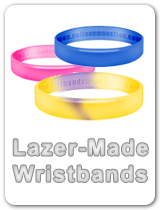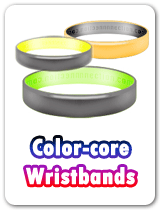Features of Plastic
Formaldehyde Resins - Bakelite
After cellulose nitrate, formaldehyde was the then product to move forward the technology of plastic. Around 1897, efforts to produce white chalkboards led to casein plastics (milk protein mixed with formaldehyde) Galalith and Erinoid are two untimely tradename examples.
In 1899, Arthur Smith got British Patent 16,275, for "phenol-formaldehyde resins for use as an ebonite substitute in electrical insulation", the primary patent for processing a formaldehyde resin. Though, in 1907, Leo Hendrik Baekeland enhanced phenol-formaldehyde reaction techniques and invented the initial fully synthetic resin to become commercially winning, tradenamed Bakelite.
Other plastics came out in the prewar period, though some wouldn't come into extensive use until after the war.
By 1936, American, British, and German companies were manufacturing "polymethyl methacrylate" (PMMA), better called "acrylic." Even though acrylics are now famous for the use in paints and synthetic fibers, such as "fake furs," in their bulk form they are in fact very stiff and more transparent than glass, and are sold as glass replacements under trade names like "plexiglas" and "lucite." Plexiglas was used to build aircraft canopies at the time of the war and it is also now used as a marble substitute for countertops.
Another significant plastic, polyethylene (sometimes called as "polythene") was found in 1933 by Reginald Gibson and Eric Fawcett at the British industrial giant Imperial Chemical Industries (ICI). This material evolved into two types, low density polyethylene (LDPE) and high density polyethylene (HDPE).
Polyethylene is cheap, stretchy, durable, and chemically resistant. LDPE is used to make films and packaging materials, counting plastic bags, while HDPE is used more frequently to create containers, plumbing, and automotive fittings. While PE has squat resistance to chemical attack, it was found afterward that a PE container could be made much more strong by exposing it to fluorine gas, which customized the surface layer of the container into the much tougher "polyfluoroethylene."
Polyethylene would result, after the war, to one more material, "polypropylene" (PP), which was found in the early 1950s. It is general in modern science and technology that the development of the general body of knowledge can lead to the same inventions in different places at about the same time, but polypropylene was an immense case of this phenomenon, being separately invented about nine times. It was a patent attorney's reverie scenario, and litigation wasn't determined until 1989.
Polypropylene managed to live the lawful process, and two American chemists working for Phillips Petroleum of the Netherlands, Paul Hogan and Robert Banks, are now normally credited as the "official" inventors of the material. Polypropylene is alike to its ancestor, polyethylene, and shares polyethylene's squat cost, but it is much more robust. It is used in the whole lot from plastic bottles to carpets to plastic furniture, and is very greatly used in automobiles.
Polyurethane was invented by Friedrich Bayer & firm of Germany in 1937. It would come into use, after the war, in blown form for mattresses, furniture padding, and thermal wadding. It is also used in non-blown form for sports wear like "lycra."
In 1939, I.G. Farben Industrie of Germany filed a copyright for "polyepoxide" or "epoxy." Epoxies are a class of thermoset plastics that form cross-links and "cure" when a catalyzing means, or "hardener," is added. After the war, they would come into broad use for coatings, "super glues," and composite resources.
Composites using epoxy as a matrix comprise "fiberglass," where the structural part is glass fiber, and "carbon-epoxy composites," in which the structural part is carbon fiber. Fiberglass is now frequently used to build sport boats, and carbon-epoxy composites are a more and more significant structural element in aircraft, as they are lightweight, sturdy, and heat-resistant.
Plastics continue to be enhanced. General Electric introduced "lexan," a great-impact "polycarbonate" plastic, in the 1970s. Du Pont developed "kevlar," a tremendously strong synthetic fiber that was best-known for its use in bullet-proof vests and warfare helmets. Kevlar was so extraordinary that Du Pont officials actually had to release statements to deny tales that the firm had received the recipe for it from space aliens.
One of the most potentially vital new developments in plastics is circuits made out of plastics called conductive polymers. Electronic circuitry made-up using plastics or other materials that could be merely printed on a substrate could be extremely cheap, opening the door to throwaway electronic devices that would cost pennies or to applications barely dreamed of now.
So far, electronic devices made with such resources have not been acceptable for production but, in 2001, prototypes of flat-panel displays based on such technologies were being openly demonstrated, with predictions of commercial foreword in two or three years.



